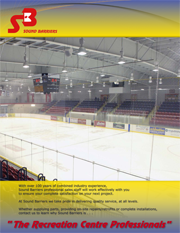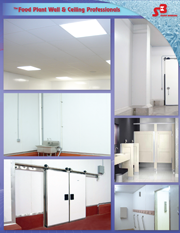Construct a certified clean-room retrofit for medical product manufacturing with the following features:
- Custom 14’ ceiling heights without horizontal seams
- Highly reflective and cleanable seamless surfaces
- Durable surfaces that resist damage from moisture, chemicals or cleaning agents
- Cost effective long-term performance and no maintenance
The 23,000 sq. ft. space featured 14’ ceilings and wall substrates including plywood and drywall. The project plan called for FRP panels that would extend to the ceiling without horizontal seams. In addition to meeting clean-room certification, the client wanted seamless wall and ceiling surfaces for minimal maintenance, long-term performance, and ease in cleaning.
FRP panels were the top consideration for construction, based on known performance characteristics, installation ease and long-term cost-effectiveness. Other potential options considered, but rejected included: lower-cost epoxy paint and/or silicone sealants, which would require ongoing maintenance and installation complexity.
SOLUTION
Crane Composites was selected based on three key factors:
- Proven product quality, performance and installation ease
- High levels of personalized service and hands-on product support
- Ability for panel customization
OUTSTANDING PRODUCT PERFORMANCE
The solution for this clean-room was Glasbord panel, combined with Crane Fast Grab adhesive and Crane Polyurethane Seam Sealant, all independently tested and certified for cleanroom applications.
Glasbord with Surfaseal anti-microbial finish ensures that the surface will not trap soil or bacteria. Glasbord panels meet USDA/FSIS requirements. The Fast Grab solvent-free adhesive is formulated for superior panel adherence on plywood and drywall substrates.
Crane Seam Sealant is a fast-curing extremely low VOC urethane sealant specifically designed for seamless performance in clean-room applications. The two-part Seam Sealant bonds with Glasbord to create a monolithic surface for trim-free superior cleanability, low particle emission, biological and chemical resistance. The surface does not require maintenance and is particularly durable and resistant.
SERVICE AND SUPPORT
The client will realize long-term returns on its investment. The clean-room is built for durability, ease in cleaning and will remain virtually maintenance free for years to come. Additionally, the high surface reflectivity will help lower lighting costs over time.
CUSTOMIZATION
For this project, the Crane Composites team was able to address the 14’ ceiling height and request for no horizontal seams by quickly supplying custom sized FRP panels. Glasbord FRP panels and all Crane Composites products, are produced at manufacturing facilities locally in the USA, so custom panels can be delivered on short-notice and cost-effectively.
BENEFITS
- Ease of FRP installation for labor cost savings
- Glasbord meet USDA/FSIS requirements
- Proven material properties and sealant that ensures virtually no maintenance
- Seamless, monolithic wall panels do not produce or trap airborne particles
- Superior chemical and biological resistance validated by independent lab tests
- Smooth surface prevents buildup with superior cleanability
- Documented extremely low VOC components
- Significant cost savings in total installed cost versus alternative wall systems
- Reduced installation complexity versus PVC and epoxy systems

 GREENGUARD Gold Certified our products meet strict criteria intended for use in environments where children and adults spend significant periods of time. Because our products never need painting, they do not contribute to VOC emissions, which improves both indoor and outdoor air quality. In addition, they can be power-washed or steam cleaned, eliminating the need for harmful chemical cleaners. Incorporating our products can contribute points toward LEED certification as well. To learn more about Greenguard Certifications you can follow this link. Greenguard Certification
GREENGUARD Gold Certified our products meet strict criteria intended for use in environments where children and adults spend significant periods of time. Because our products never need painting, they do not contribute to VOC emissions, which improves both indoor and outdoor air quality. In addition, they can be power-washed or steam cleaned, eliminating the need for harmful chemical cleaners. Incorporating our products can contribute points toward LEED certification as well. To learn more about Greenguard Certifications you can follow this link. Greenguard Certification




 Thanks to the exclusive Surfaseal finish, Glasbord is the perfect solution for applications requiring cleanability, low particle emission, biological resistance and chemical resistance.
Thanks to the exclusive Surfaseal finish, Glasbord is the perfect solution for applications requiring cleanability, low particle emission, biological resistance and chemical resistance.
